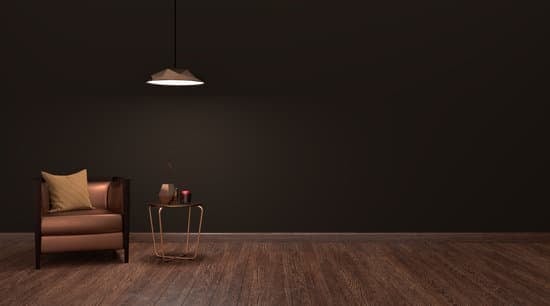Decorating a home theater room is the key to creating an immersive movie-watching experience. In recent years, there has been a growing trend of homeowners designing dedicated spaces for their personal cinema experiences. A well-decorated home theater room not only adds aesthetic appeal but also enhances sound quality and overall comfort. This article will guide you through the essential steps to decorate your own home theater room, ensuring that every movie night becomes a memorable and captivating experience.
The rise in popularity of home theater rooms can be attributed to advances in technology and the desire for a more personalized cinema experience. Instead of going out to crowded theaters, many individuals are now opting to create their own private entertainment spaces at home. Having a dedicated area with carefully chosen decor brings the magic of the big screen directly into your living space.
A well-decorated home theater is not just about aesthetics; it plays a significant role in maximizing the immersion factor. The right lighting, seating arrangement, audio-visual setup, and acoustic treatments all contribute towards creating an environment that engulfs you in the movie-watching experience. With careful planning and attention to detail, you can transform any room into your very own screening sanctuary.
Choosing the Perfect Location for your Home Theater Room
When it comes to creating the perfect home theater room, one of the most crucial decisions you’ll need to make is choosing the ideal location within your house. The right location can significantly impact your movie-watching experience, so it’s important to consider certain factors before finalizing a room.
Firstly, take a look at the available space in your house and identify possible locations for your home theater room. It could be a spare bedroom, a basement, or even an unused area in your living room. Consider the dimensions of each potential space and ensure that it can accommodate the size of screen and seating arrangement you desire.
Additionally, think about noise control as well. Avoid rooms near high-traffic areas or rooms with thin walls that may leak sound to other parts of the house.
Another important factor to consider is lighting. Natural light can interfere with the image quality on your screen, so choose a room with minimal windows or ones that can be effectively covered by blackout curtains or blinds. If windows are unavoidable, consider investing in motorized window coverings that can easily block out excess light during viewing.
Once you have narrowed down your options based on these factors, it’s time to select the ideal room for your home theater setup. Keep in mind that every house and every homeowner is different, so make sure you choose a room that suits your personal preferences and needs. Taking into account factors such as noise control, dimensions, and lighting will help ensure that you create a home theater room that provides an immersive movie-watching experience everyone will enjoy.
Creating the Ultimate Audio-Visual Setup
When it comes to decorating a home theater room, one of the most crucial aspects is creating the ultimate audio-visual setup. This section will guide you through selecting the essential components for your home theater system, providing tips on choosing high-quality equipment within various budgets, and highlighting the significance of professional installation and calibration for optimized audio-visual performance.
To start with, it is essential to understand the fundamental components of a home theater system. These include the projector or screen, speakers, AV receiver, and media player. When selecting these components, consider your budget and desired level of quality. Research different brands and models to find ones that offer excellent picture and sound quality for an immersive movie-watching experience.
When it comes to audio equipment, speakers play a critical role in delivering high-quality sound in your home theater room. Options range from floor-standing speakers to bookshelf or in-wall speakers. Consider factors such as speaker placement, size, power handling capability, and frequency response when making your selection. Additionally, investing in an AV receiver that matches your speaker capabilities can significantly enhance audio performance.
For video equipment, projectors offer a cinematic experience by displaying images on a large screen. Look for features such as resolution (e.g., 4K or HD), brightness levels (measured in lumens), contrast ratio, and throw distance when choosing a projector. Alternatively, if space is limited or you prefer a simpler setup, consider investing in a high-quality flat-screen TV.
While selecting audio and video equipment is crucial for optimal performance, professional installation plays an equally important role. Hiring experts ensures proper positioning and calibration of components for the best sound and image quality. Professionals will assess factors like room acoustics and seating positions to make precise adjustments that result in an immersive experience.
In summary, creating the ultimate audio-visual setup requires careful consideration of essential components like projectors/screens, speakers, AV receivers, and media players. Conduct thorough research to find high-quality equipment that fits your budget and desired level of performance. Additionally, consider seeking professional installation and calibration services to maximize the potential of your home theater room.
Designing the Perfect Seating Arrangement
When it comes to designing the perfect seating arrangement for your home theater room, there are several factors to consider. Not only do you want to ensure optimal viewing angles for everyone in the room, but you also want to prioritize comfort. In this section, we will discuss different seating options, provide pointers on arranging seating, and emphasize the importance of considering the number of seats needed based on personal preferences and accommodating guests.
Seating Options
One of the first decisions you’ll need to make when designing your seating arrangement is what type of seating you want to incorporate. There are various options available, including recliners, sofas, and dedicated theater seats. Recliners are popular for their ability to provide individual comfort and allow viewers to fully relax while watching a movie.
Sofas can be a good choice if you prefer a more casual setting where people can gather together. Dedicated theater seats can offer an authentic cinema experience with features like cup holders and built-in seat risers.
Arranging Seating
Once you have chosen your seating options, it’s essential to arrange them in a way that ensures optimal viewing angles for everyone in the room. A common arrangement is the “stadium-style” layout, where each row of seats is elevated slightly higher than the one in front of it. This design allows for unobstructed views from each seat. If space permits, consider leaving enough room between rows for people to walk comfortably without disrupting others.
Considerations for Number of Seats
Another crucial aspect of designing the perfect seating arrangement is determining how many seats you will need. Consider your personal preferences as well as how often you plan on entertaining guests in your home theater room.
If you frequently host movie nights or gatherings, it may be beneficial to have additional seating options such as bean bags or floor cushions that can be easily brought into the room when needed. Additionally, if you have a large family or frequently watch movies with friends, it’s important to account for enough seating to accommodate everyone comfortably.
Lighting and Ambiance
Creating the perfect lighting and ambiance in your home theater room is essential for setting the mood and enhancing the overall movie-watching experience. The right lighting can make a significant difference in immersing yourself into each scene, creating a more authentic theater-like atmosphere. In this section, we will explore the significance of lighting in your home theater room and provide tips on how to incorporate different lighting elements.
Firstly, it is important to understand that lighting serves two main purposes in a home theater room: functionality and ambiance. Functionality refers to having adequate task lighting that enables you to move around safely within the space. This can include installing dimmable lights near walkways or entrances/exits, allowing easy navigation without distracting from the movie.
However, when it comes to ambiance, it’s all about setting the right mood for each scene. One popular method is to incorporate dimmable lights or controlled lighting systems that allow you to adjust the brightness according to your preference. For example, during intense action sequences, you may want brighter lights to enhance visibility, while dimming the lights during dramatic or suspenseful moments can create a more immersive experience.
In addition to dimmable lights, ambient lighting can also play a significant role in enhancing your home theater room’s ambiance. Consider strategically placing LED strip lights behind or around your screen or using wall sconces with soft light bulbs along the side walls to create an appealing glow. You can even experiment with colored LED lights for a more dynamic effect.
An additional tip for incorporating lighting control is by integrating smart home technology into your setup. With smart automation systems, you can program customized lighting scenes for different movie genres or specific movies themselves. This not only simplifies control but also adds an extra layer of convenience and sophistication to your home theater room.
By carefully considering and implementing appropriate lighting techniques and fixtures, you can significantly elevate your home theater experience. The right lighting and ambiance not only enhance the visuals but also create an immersive atmosphere that transports you into the movie itself.
Acoustic Treatment
When it comes to creating the perfect home theater room, sound quality is of utmost importance. Acoustic treatment plays a crucial role in enhancing the audio experience and ensuring that every sound is crisp, clear, and immersive. In this section, we will explore the significance of acoustic treatments and provide guidance on how to optimize sound quality within your home theater.
The Importance of Acoustic Treatments
Acoustic treatments are designed to control the way sound interacts with the room’s surfaces, ensuring an accurate and balanced listening experience. Without proper acoustic treatment, sound waves can bounce off walls, ceilings, and floors, leading to reflections and echoes that degrade the overall audio quality.
By incorporating acoustic treatments into your home theater room, you can minimize unwanted reflections and sound distortions, resulting in improved clarity and realism. This enhancement allows you to fully immerse yourself in the movie-watching experience as if you were inside a real cinema.
Selecting and Placing Acoustic Treatments
There are various types of acoustic treatments available on the market today, including absorption panels, bass traps, and diffusers. Each type serves a different purpose in managing sound reflections in your home theater space.
Absorption panels are particularly effective at reducing echoes by absorbing excess sound energy. They can be placed strategically on walls or ceilings to target early reflections. Bass traps are designed to absorb low-frequency sounds that tend to accumulate in corners or along walls. Placing bass traps in these areas helps improve bass response and reduces muddiness in your audio playback.
Diffusers work by scattering sound waves more evenly throughout the room while maintaining a live or vibrant listening environment. They help create a sense of spaciousness without sacrificing clarity. Diffusers should typically be placed on rear walls or directly behind your seating area.
When selecting and placing acoustic treatments in your home theater room, it’s important to consider the specific dimensions and layout of the space. Experimenting with different combinations and configurations can help achieve optimal sound quality by addressing specific sound issues within your room.
DIY Soundproofing Solutions
For those on a tight budget, there are also cost-effective DIY solutions available for soundproofing your home theater room. These solutions can help minimize sound leakage and prevent noise from disrupting other areas of your home.
Some effective DIY options include installing weatherstripping or door sweeps around doors to seal any gaps that may let sound through. Adding heavy curtains or acoustic blankets to windows can also help reduce external noise and improve the overall acoustics of the room.
Additionally, ensuring proper insulation in walls and ceilings can provide sound isolation benefits, minimizing sound transmission between rooms or floors in your home. This can be achieved by adding additional layers of drywall, using specialized acoustic insulation materials, or even creating a dedicated double wall construction.
By implementing these cost-effective DIY solutions, you can significantly enhance the sound quality within your home theater room without breaking the bank.
Incorporating proper acoustic treatment is an integral part of creating an immersive movie-watching experience in your home theater. By reducing unwanted reflections and improving clarity, you can enjoy high-fidelity audio that transports you into the heart of every scene. Whether you invest in professional-grade treatments or opt for DIY solutions, taking the time to optimize your home theater’s acoustics will undoubtedly elevate your viewing pleasure.
Theming and Decor
When it comes to creating the perfect home theater room, personalization is key. Theming and decor play a crucial role in transforming a simple room into an immersive movie-watching experience. By carefully selecting appropriate decor elements, you can create a unique atmosphere that reflects your love for movies and enhances the overall ambiance of the space.
One popular approach to theming your home theater room is to draw inspiration from classic cinema. This theme often incorporates elements reminiscent of old movie theaters, such as vintage movie posters, wall art featuring iconic films or directors, and rich red velvet curtains. To further enhance the aesthetic, consider adding plush carpeting or installing tiered seating reminiscent of traditional theater layouts.
For those who prefer a more glamorous touch, Hollywood glam is an excellent choice. Think sparkling chandeliers, mirrored accents, and luxurious fabrics. Incorporate gold or silver accents into your decor choices to capture the essence of Old Hollywood elegance. Consider using black velvet curtains for a touch of drama and luxury.
If you have a love for futuristic and cutting-edge technology, you might want to opt for a modern-themed home theater room. Sleek lines, minimalist design elements, and metallic finishes can help achieve this look. LED accent lighting can create an ultra-modern feel while adding pops of color throughout the room.
Along with selecting appropriate themes for your home theater room, it’s important to consider other decor elements that contribute to the overall movie-going experience. Consider investing in comfortable seating options like recliners or dedicated theater seats that offer adequate support for long periods of sitting without sacrificing style or comfort.
In addition to seating options, designing a dedicated concession area can bring an authentic theater experience into your own home. Install a small popcorn machine or candy display counter where guests can help themselves during intermissions. By creating this dedicated space within your home theater room, you’ll ensure convenience and add another layer of authenticity to your movie-watching experience.
Incorporating themes and decor elements that resonate with your personal taste is essential when designing a home theater room. These choices will not only enhance the visual appeal of the space but also contribute to the overall immersive experience. By creating a personalized environment, you’ll be able to enjoy your favorite movies in a setting that reflects your unique style and preferences.
Optimizing Comfort and Convenience
Creating a comfortable and convenient home theater room is crucial for an enjoyable movie-watching experience. To optimize comfort, it is essential to consider elements such as blackout curtains, temperature control, and proper ventilation. Additionally, organizing cables and creating a clutter-free setup can enhance convenience and aesthetics. Incorporating smart home automation can also provide easy control of various systems within the room.
One important aspect of comfort in a home theater room is controlling the amount of light that enters the space. Installing blackout curtains or shades will help block out any unwanted sunlight or external lights that can cause glare on the screen. This ensures a more immersive viewing experience by maintaining optimal image quality and contrast levels.
Temperature control is another factor that can significantly impact comfort in a home theater room. It’s important to keep the room at a comfortable temperature to prevent distractions during movie sessions. Consider installing a thermostat or HVAC system that allows you to easily adjust the temperature according to your preferences.
Proper ventilation is crucial to maintain air circulation and prevent the room from becoming stuffy or uncomfortable. This can be achieved by installing ceiling fans or ventilation systems that effectively circulate air throughout the space. A well-ventilated home theater room not only enhances comfort but also helps dissipate heat generated by audio-visual equipment.
Keeping cables organized and hidden is not only aesthetically pleasing but also contributes to convenience in a home theater setup. Consider using cable management solutions such as cable raceways, clips, or wall-mounted conduits to hide unsightly wires and reduce tripping hazards.
Lastly, incorporating smart home automation into your home theater room can greatly enhance convenience. By integrating various systems such as lighting, audio-video equipment, temperature control, and even motorized seating mechanisms into a centralized control system, you can easily manage all aspects of your home theater with just a few taps on your smartphone or tablet.
Conclusion
In conclusion, creating the perfect home theater experience requires attention to detail and careful consideration of various factors. From choosing the location to selecting the audio-visual equipment, designing the seating arrangement, and incorporating lighting and ambiance, every aspect plays a crucial role in immersing yourself in a movie-watching extravaganza.
When decorating your home theater room, it is essential to personalize the space according to your preferences. Whether you opt for a classic cinema theme or a modern futuristic design, incorporating decor elements such as movie posters, wall art, curtains, and carpets can add an extra touch of authenticity. Additionally, don’t forget to include a dedicated concession area to complete the theater experience.
Moreover, comfort and convenience should not be overlooked. Consider installing blackout curtains for optimal viewing conditions and controlling temperature and ventilation for maximum comfort during long movie sessions. Organizing cables and creating a clutter-free setup not only enhances aesthetics but also adds convenience. Integrating smart home automation systems allows easy control of various aspects within the room.
By following these steps and considering personal preferences, you can create your dream home theater setup that provides an unforgettable cinematic experience right at home. So gather your favorite movies, grab some popcorn, and get ready to enjoy the magic of the cinema in the comfort of your own space.
Frequently Asked Questions
How to arrange home theatre in room?
When arranging a home theatre in a room, there are a few key factors to consider. Firstly, it’s important to choose the right location for optimal viewing and sound quality. Consider placing the television or projector screen in a position where everyone can comfortably view it without any obstructions. Place seating such as couches or recliners at an appropriate distance from the screen, ensuring that there is enough space for people to move around easily.
Next, consider the sound system setup by strategically placing speakers around the room for surround sound experience. It is also important to minimize ambient light by using blackout curtains or blinds to enhance the viewing experience. Additionally, organizing cables and wires neatly will not only make your home theater more aesthetically pleasing but also prevent any tripping hazards. Finally, adding some storage solutions for DVDs, remote controls, and other accessories can help keep everything organized.
How do I make my home theater cozy?
To make your home theater cozy, there are several elements you can incorporate into the space. Starting with seating options, choose comfortable chairs or sofas that allow you to sink in and relax while enjoying your favorite movies or shows. Adding plush pillows and throws can create an inviting atmosphere where you can curl up and get cozy during movie nights.
Soft lighting is essential for creating a warm ambiance; you could install dimmer switches or use lamps with soft bulbs instead of harsh overhead lighting. Another important aspect is temperature control – ensure that your home theater area is kept at a comfortable temperature all year-round so that everyone can feel relaxed and cozy throughout their viewing experience.
How to decorate a room for movie theater?
When decorating a room for a movie theater theme, there are numerous creative options to consider. Start by choosing a color scheme that reflects the atmosphere of a classic movie theater – deep reds, blacks, and gold accents often work well together in this context. Consider applying these colors to walls through paint or wallpaper choices while keeping them complementarily neutral elsewhere so as not to overwhelm the space.
Movie-themed artwork, such as vintage movie posters or framed stills from classic films, can add an authentic touch to the walls. Additionally, incorporating elements of classic theater decor like velvet curtains or a popcorn machine can enhance the ambiance and bring in the theme further. Lastly, comfortable seating arrangements with plush upholstery or leather recliners can add a luxurious feel to the room while also providing comfort during screenings.

I’m thrilled to be your companion on this exciting journey through the world of home decor and design. With a passion for turning houses into homes and a keen eye for the finer details, I’m here to help you transform your living spaces into beautiful, functional, and meaningful havens.





